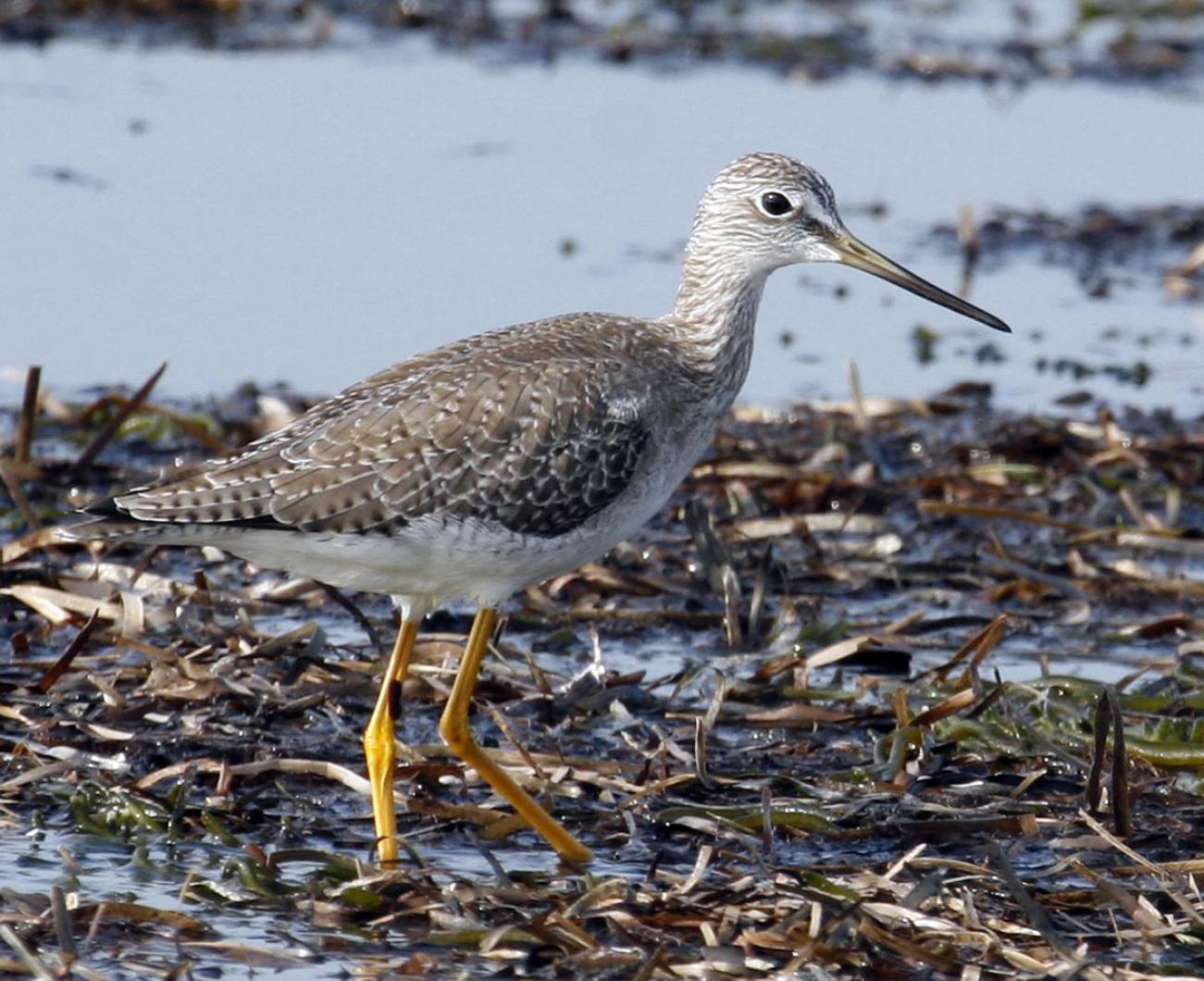Can you believe it is November already? And it is dark at 5 p.m.? The latter certainly does not affect birds as it is unlikely that they know what Daylight Saving Time is. But they certainly know it is November, and their southward migration is still in full swing. Sparrows and other finches are moving through, and our winter resident waterfowl are showing up. Their numbers will continue to swell as the season progresses. A lot of the ducks only come south when the more northern waters freeze over, which may not happen until December or even January.
Over the years, we have thoroughly documented the abundance of our birdlife in the early winter. The annual Martha’s Vineyard Christmas Bird Count, which has happened every year since 1960, is how we have compiled this information. Last year we observed 130 species, which was the highest number of species we have ever observed. More than 100 people participated in that count; 67 were out in the field all day counting all the birds they could find in their assigned territory, and 35 others reported how many birds came to their feeders.
This winter’s count will be held on Saturday, Jan. 3, 2009. As the compiler of this count, I hope that everyone who participated last year will participate again this year. Everyone else who is interested in birds also is invited to participate. For more information, please contact me at 508-693-4908 or by e-mail at rculbert@gis.net.
Bird Sightings
Pine siskins and cedar waxwings are in the news this week. Lanny McDowell found about 40 pine siskins on Oct. 31 at Wasque. Happy Spongberg found a large mixed species flock of siskins, cedar waxwings and robins feeding on berries in Chilmark on Nov. 2. On the same day, Albert Fischer observed five cedar waxwings in Aquinnah, and I observed a large flock of at least 30 cedar waxwings off Lambert’s Cove Road; there were smaller birds mixed in with the waxwings, but unfortunately I did not have my binoculars and so could not identify them.
Another good bird found on Nov. 2 was an immature red-headed woodpecker reported by Tom Rivers near the intersection of Tea Lane and Middle Road in Chilmark. This could be a migrating individual, but it also could settle down and stay for a while, so look for it when you are next in that area. Just to make matters confusing, the immature red-headed woodpecker does not have any red on its head (until it molts into adult plumage in the winter), while the much more common red-bellied woodpecker has a lot of red on its head. Please do not confuse these two very different woodpeckers!
On Oct. 31, Lanny McDowell visited the tidal flats at the Katama end of Norton Point Beach and found five brant, which are the first ones reported for this season. Sheila and Tim Baird report that the brant returned to Ocean Park in Oak Bluffs on Nov. 1. This small goose is easy to observe in that area for the next six months — if they are not grazing on the grass in the park then look for them across the road at the pay beach.
Lanny McDowell also found two black-crowned night–herons, two great blue herons, red-breasted mergansers, bufflehead, ring-billed and laughing gulls, and two red knots with the many black-bellied plovers and dunlin at Katama. At Wasque there were the above mentioned pine siskins, a hermit thrush, a merlin, and the seemingly unending skeins of eiders and scoters out in the ocean to the southeast. Out on Cape Pogue their highlights included 15 snow buntings and a greater yellowlegs.
On Nov. 1, Albert Fischer observed two meadowlarks and a kestrel in Aquinnah, and had three white-throated sparrows arrive at his feeder. The next day he had two dark-eyed juncos at his feeder. On Nov. 3 Sheila and Tim Baird had a junco at their feeder in Katama — it was their first since early October.
Laurie Walker and Katherine Colon birded Katama on Oct. 28 and their highlights were vesper sparrow and semipalmated plover. On Nov. 3 they went to Aquinnah and observed red-necked grebe, harlequin duck, laughing gulls, eastern bluebirds, field sparrows and northern flickers.
On Nov. 1 Laurie Walker observed a female rose-breasted grosbeak at her feeder.
And to follow up on last week’s discussion of bird feeders, the overall consensus of my discussions over the past week is that it has been a slow autumn, characterized by Happy Spongberg’s report of almost no birds at her feeder. The busiest feeder seems to be in Katama at the Bairds’, where it has been a normal season so far.
On election day I observed two tufted titmice hanging around where my feeder normally is. I feed birds in the fall and winter only, so now I am putting the feeders up for the season and will keep them filled until April, so that food will be available to the birds when they need it the most — during our cold winter weather.
Please remember to call your bird sightings in to the bird line at 508-627-4922 or e-mail them to birds@mvgazette.com so there will be something to report in next week’s column.
Robert Culbert is an ecological consultant and bird tour leader living in Vineyard Haven.




Comments
Comment policy »